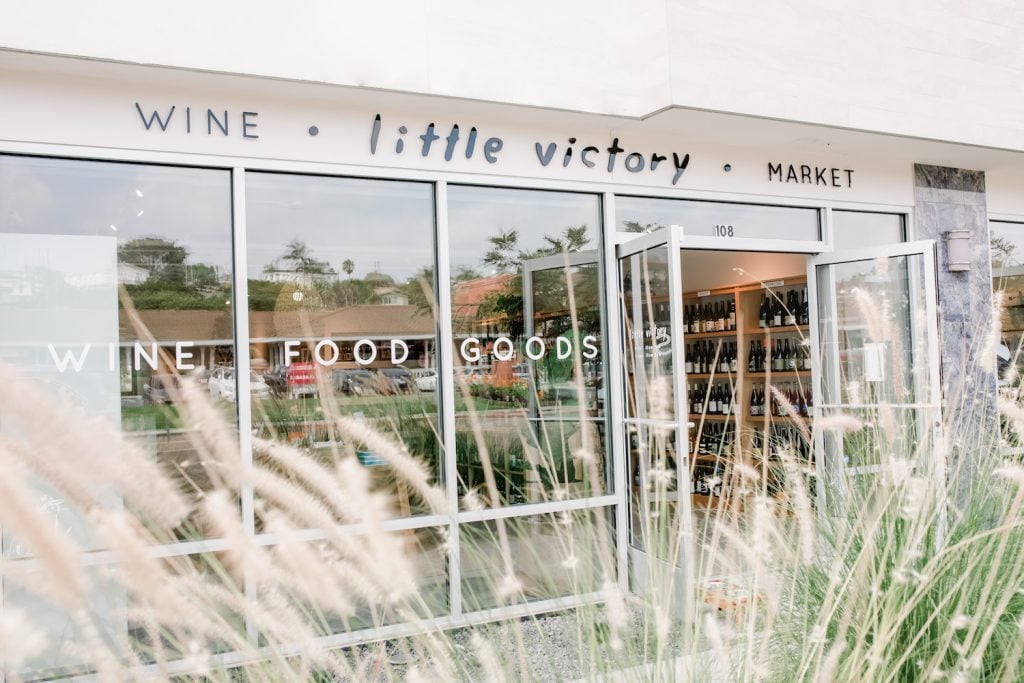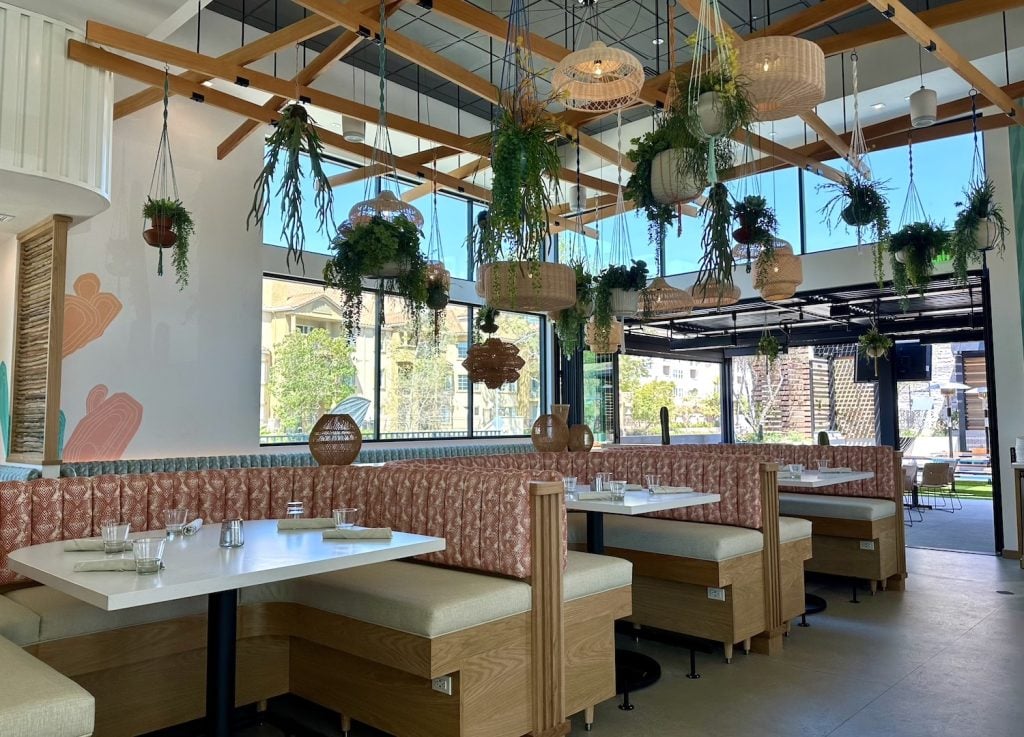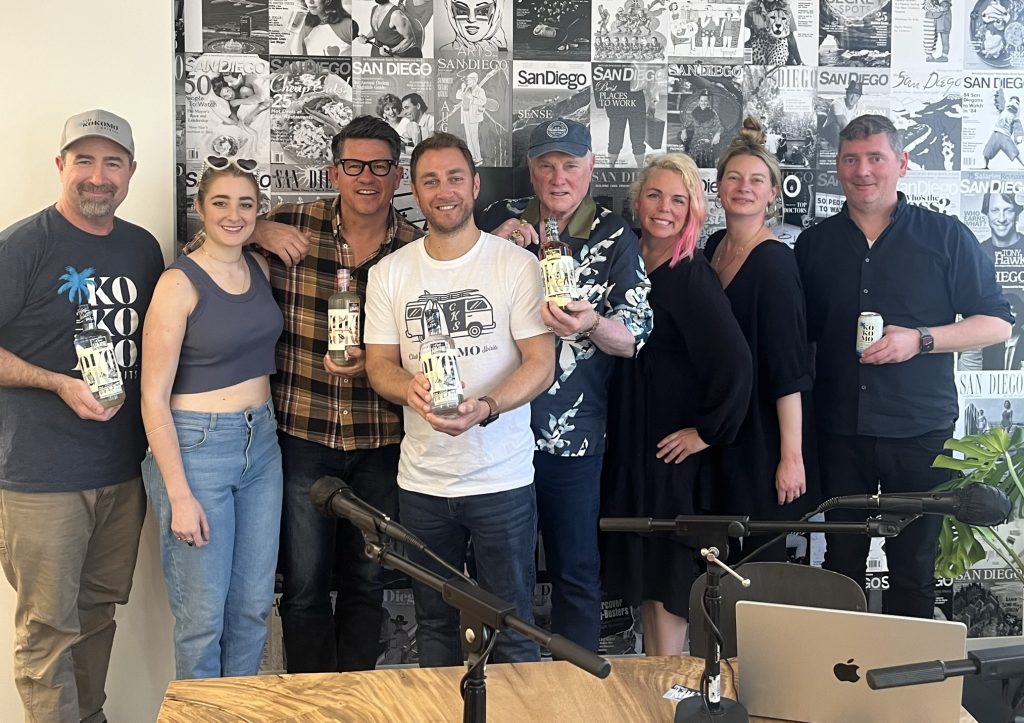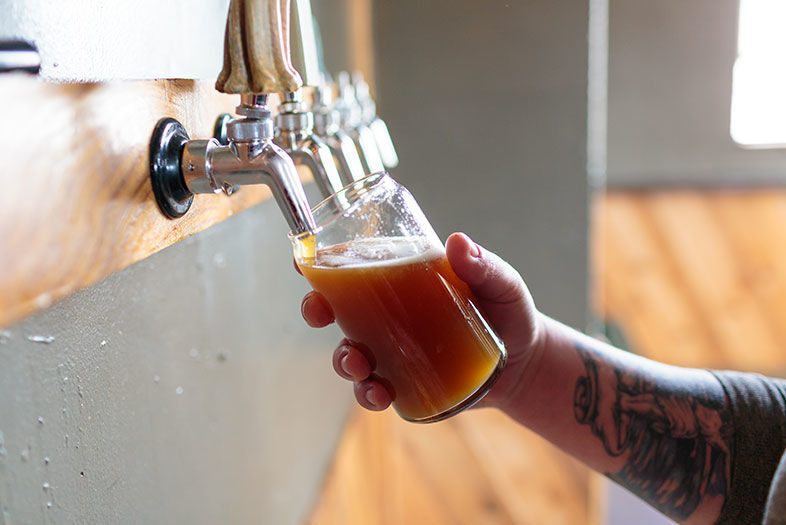Back in September, I did an interview with Karen Barnett, owner of Small Bar in University Heights. After chatting with Karen informally, and hearing her concerns about the current explosion of tasting rooms in San Diego County, I decided the issue was important enough to be given a public forum. The goal was to spark meaningful discussion that could eventually help all stakeholders in the craft beer community ensure that their concerns were being heard and that interests were being protected. For the most part, the article was well received and the discussion was beneficial, but the interview—as objective as it tried to be—still only represented the views of one segment of the community—namely the bar owners.
Which brings us to this piece today. In an effort to get the “other side of the story,” I reached out to ten brewery owners with questions on the topic of tasting rooms and asked them to comment on some of the most hotly contested issues. A number of them declined to wade into the debate (it is a touchy subject for many folks in the industry), a few said they would respond but didn’t come through in time, and four gave me their detailed and candid thoughts on the matter. Those participants were Virginia Morrison of Second Chance Beer Co., Matt Del Vecchio of Duck Foot Brewing Company, Douglas Constantiner of Societe Brewing Company, and Thomas Vogel of Belching Beaver Brewery. Here is an excerpted compilation of what they said.
What do you say to people who are concerned that brewery tasting rooms in high-density areas (North Park, 30th Street, OB, etc.) are “cannibalizing” the business of craft beer bars?
Douglas: This is a tough one. On one end, I think they are diluting the drinking options in high-density places. There are plenty of places to drink in those areas and adding more will decrease sales overall for everyone. But on the other end, bars and restaurants can offer so much more than a satellite tasting room; a diverse and varied selection of drinks (beer, wine, cocktails) and food so it’s not “apples to apples.” Nevertheless, a satellite tasting room is no different from a new brewery or brewpub opening in those areas.
Virginia: While some may view North Park as oversaturated, we did thorough research before we started looking at satellite locations. We found that: a) Our fans wanted us in North Park; b) San Diego tourism, generally, was expected to grow for years to come; and c) We believed (and still do) that North Park businesses are not just vying for nearby resident’s dollars. If we thought that, we would not have opened there. Rather, we strongly feel (and people within North Park Main Street, Explore North Park, and the North Park Community Association affirmed) North Park is a tourist destination, not only for San Diegans, but also for visitors from all over. Thus, we want to be part of the North Park Community; we want to contribute to this burgeoning and utterly exceptional neighborhood and rise the tide for all of us!
Undoubtedly, we also hope it will be good for our brand’s long-term success and get us in touch with Second Chance Beer fans we simply can’t get out to Carmel Mountain Ranch. But, we also want to partner with neighborhood brewing pioneers like Fall, Mike Hess, and newer colleagues like North Park Beer Co., Rip Current, Eppig, Modern Times, San Diego Brewing, and Pariah. Being closer to friends like Karen at Small Bar, Lee at Blind Lady Ale House, and Scot at Hamilton’s Tavern will enable us to work closely and collaborate with them more frequently and in exciting ways. We opened our brewery and production facility in a low-density area, where there are chains galore. Don’t get me wrong, we love where we are and the craft community we’re helping to build there, but for the growth, development, and sustainability of our brand, we want our tasting rooms to be where there is existing demand and where we’re confident we can create it because of the demographic.
âªTom: [When considering new tasting room locations] first, we look at areas where our brand is underserved. As an example, we had customers driving from North Park to our Vista location because they could not get our brand or as many styles of our brand in North Park. Therefore, we knew for us, North Park was underserved. That is why we decided to place a tasting room on 30th Street. Please keep in mind we renovated a building that had been vacant for 18 months, there were tents and human feces in the parking lot. We did our best to improve that section of 30th Street. We have been part of that community for about four-and-a-half years, and we love it there. As far as cannibalizing, I think that anywhere someone goes to drink beer is competition for any other establishment serving beer. If we started serving food, we would be a restaurant, yet still be competition. Just as any other restaurant or tasting room is competition for us. â¬â¬
Matt: And business [in any one area] doesn’t stay the same; it’s always evolving. There are more breweries than craft beer bars have taps in San Diego. I doubt any brewery could stay in business counting just on rotation in bars.
Tom: Our primary goals are likely different [from our bar competition], we are trying to get as many people as possible to try and hopefully love our product—and we want them to have fun drinking it. That’s our primary goal. In that respect, that location did wonders for our brand throughout San Diego. At the end of the day, I don’t know if a tasting room is greater competition than any other entity that sells beer. If someone sits down at a pizza place and has a couple beers, it’s that many fewer that person will buy anywhere else. Our location is restricted to only serving beer we make; we cannot serve any other brand, nor can we sell wine or liquor, and our hours are also limited. I agree with those restrictions. They fit our plan and purpose. â¬
âªOn a side note, we are going through the same thing at our original location in Vista. A lot of breweries have moved close to us. Our business there had started to slow. We really had to figure out what we could do to win back the hearts of our guests. So we decided to change the entire atmosphere, adding food, wine, a live plant wall, and an indoor koi pond—making it more fun, and changing the entire experience. Although the jury is still out, that’s how we are reacting to the increased competition. We look at ourselves and ask; how can we do better? It’s a question we ask ourselves daily. â¬â¬â¬
Do you feel that breweries have an obligation to consider the business needs of the craft beer bars that also carry beer from those breweries?
Tom: Yes, I do. We do not look at placing tasting rooms in areas where we have good support. If our product is already there, why compete with friends? In addition, we are mindful not to undercut the beer prices of our neighbors and those businesses that carry our brand.
Matt: Business is business. It’s a competition and we respect all bars and craft beer establishments. A lot of places only want something new. That’s just where the market is. [At the brewery] we can brew a lot of different beers, but we also serve a different market that wants what’s new, but at a slower pace (aka retail and off-premise). That places some pretty crazy demands on our brewers and equipment. It takes a lot of work to keep beers like The Looker and Contender in package while we’re still constantly turning out new styles— even though it is a great challenge and a lot of fun.
Douglas: Every business is different and has different wants and needs based on revenue generation and marketing. A satellite tasting room no doubt increases a brewery’s market visibility and that is beneficial to the brewery. If a brewery is selling a lot of beer in an area in which it opens a satellite tasting room, then, yes, that brewery should absolutely consider the current operating businesses that willingly buy beer and help that brewery pay its bills.
Virginia: Yes, [breweries have an obligation to consider craft beer bars] just as much as those craft beer bars should consider the business needs of the breweries that made those bars successful in the first place. It really is a symbiotic relationship and, call us Pollyanna-ish, but we believe there is a way for us to work together for each other’s betterment. The law allows breweries to have six duplicate licenses, and we want to at least do that in a neighborly way.
Why is it important for breweries to have up to six offsite licenses for tasting rooms?
Matt: I see it as an opportunity to build a following in different geographic regions that may help drive off-premise/retail habits. The further you get away from your brewery, the more important it is to have a brick-and-mortar location to support your brand reach and to create community. (Uh oh…I hope I didn’t just give away our business plan!)
Virginia: Craft breweries want to be able to offer a fun experience for their fans in a location other than the original brewery. Look at San Diego: The county has more than 3 million people. Hence, it makes sense to have other locations where a brewery’s fans can enjoy their beer in a relaxed atmosphere that’s consistent with the brewery’s vision and values.
Douglas: Let’s back our way into this. Originally, breweries could have unlimited duplicate licenses. A duplicate license allows the license holder to occupy another location with all privileges of the license other than manufacturing. I believe this was intended for beer storage, shipping, receiving, office space, packaging, etc. All things that breweries might need outside of their original space. Take note that a duplicate license only prohibits manufacturing, which means tasting/serving beer is allowed. With the craft beer boom, the ABC took note of this early on and decided to limit retail privileges to six locations. The ABC thought this through and deliberately made this decision. As I said previously, each brewery operates differently and the reasons why are unique to that brewery. My opinion is purely based on what our company (Societe) needs: A brewery should only start a tasting room because: 1) Marketing, increasing brand visibility and offering to customers not close to the brewery, and 2) A brewery wants another source of income other than increasing wholesale business. I think the perfect example was Stone South Park. At the time, the only way to get Stone growlers was to go up to Escondido. Stone made it possible to have the Stone store experience (merch, decor, growlers, etc.) much closer to home for most of San Diego. Today, Stone still does the best job of giving that Stone experience to people who are not able or willing to make the drive up to Escondido. For me, that’s the only way to operate a true duplicate license. So why is it important to have six? I don’t think it is. I think a brewery should be able to be self-sufficient through its wholesale business first before venturing out into the retail market.
Tom: I am confused as to why there should be any restraints on growing a business. As far as tasting rooms go, maybe geographical as opposed to the number of locations could be looked at to keep their purpose appropriate. In San Diego alone there are many communities. We are a great country because of competition, not for lack of it. Also, keep in mind, breweries make many styles of beer and there are tons of breweries [competing] for a limited number beer bar taps. Tasting rooms are a great way of letting people know what our brewery is all about, and [it showcases] all the beer types we make. In addition, looking at what we sell in our tasting rooms lets us know which styles are well received and should move forward to full production. Also, California is a huge place; we would like new locations in Orange County, Long Beach, and L.A.
Do you feel that there is too much of a “fish where there’s fish” mentality right now? That is, do you feel it would serve the community better if new tasting rooms didn’t come into areas where lots of other tasting rooms/bars already exist?
Virginia: Not at all. As many people know, most breweries start in industrial areas. We were no different – economics are what they are. To get the amount of space, with the parameters we needed, mandated that we brew in an industrial area. So, to diversify, and be able to offer the same brand-consistent experience, utilizing our own team, opening in non-industrial areas just makes sense. The public clearly is in favor of brewery tasting rooms opening in more commercial parts of the county. Also, what’s available space-wise, when deciding to open a new location, is another factor many people do not realize is important. It’s often a deciding factor. There are only so many retail spots available at any particular time that will meet a brewery’s specific space, geographic, and budget requirements.
Matt: If you look at Miramar and all the breweries there, it’s great. We look at it as a rising tide. However, the reason all the breweries are in Miramar is because that’s where the city zoned our type of business. I would feel the same if we were in OB. That place is a great destination for people that want to experience craft beer and be down near the ocean, just as “Beeramar” is for breweries.
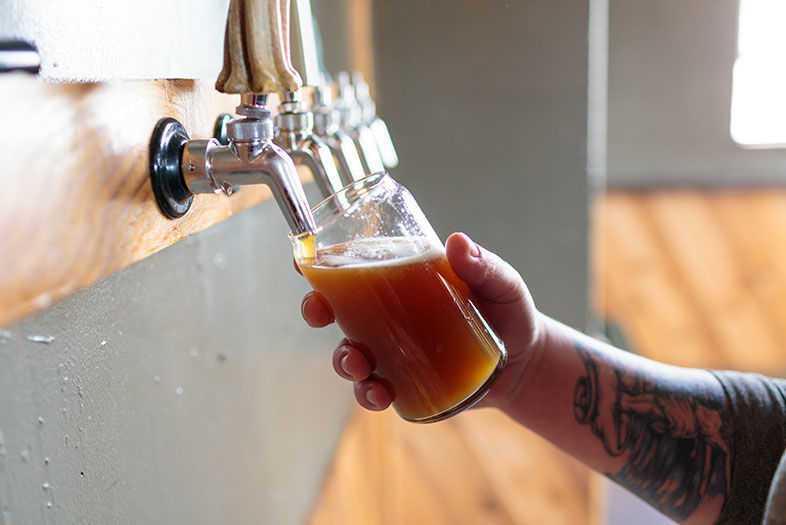
Local Brewers Weigh in on the Tasting Room Debate

